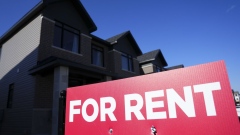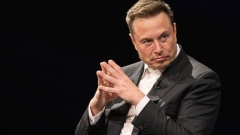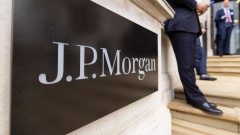Mar 23, 2023
Australia’s Left Poised for Rare Control of Entire Mainland
, Bloomberg News

(Bloomberg) -- Prime Minister Anthony Albanese’s center-left Labor party is on the cusp of holding power in every mainland state and territory for just the second time in the party’s 120-year history. Yet such dominance may prove a poisoned chalice.
Polls suggest a state election on Saturday in New South Wales, Australia’s most populous state that includes Sydney, could end 12 years of center-right rule. That would mean all of the nation’s six states and two territories bar one — the island state of Tasmania — would be under Labor rule.
The Liberal-National coalition has abandoned its traditional fiscal rectitude in a bid to hang onto power after a succession of leaders and recent scandals dented support.
Yet rather than smoothing the path for Albanese to enact his 10-month-old government’s agenda, the reality is likely to be different. Historically, a strong independent streak in state and territory leadership has led to push back against federal peers, especially those from the same party.
“There’s going to be relatively few occasions when there’s any meaningful party discipline involved,” said Bob Carr, NSW’s longest-serving Labor premier, who held office from 1995 to 2005. “States have their own interests.”
Carr added that he had deliberately distanced himself from the then-deeply unpopular Labor Prime Minister Paul Keating ahead of the 1995 NSW election.
When Labor last controlled every state and territory government in 2008, there was also strong discontent with then-Prime Minister Kevin Rudd on a range of issues, including his plans for a new national health funding model.
At present, Prime Minister Albanese, 60, and NSW Premier Dominic Perrottet, 40, have a strong working relationship, aided by the state’s Liberal Party’s tradition of being comparatively moderate and reformist, in contrast with its conservative federal colleagues.
Perrottet is currently trailing Labor opposition leader Chris Minns narrowly in opinion polls ahead of the March 25 ballot, with a Newspoll survey in late February finding Labor leading the government 52% to 48%.
A series of ministerial scandals and growing public dissatisfaction over housing shortages, rising cost of living and privatization of public assets have weakened the state government’s standing.
To counter this, Perrottet has made a number of spending pledges in recent weeks, including a savings fund for each NSW child to be used toward the cost of their education or a home deposit in an A$850 million ($570 million) bid to turn the tide.
That’s potentially problematic when the central bank has pursued the most aggressive tightening cycle in a generation and fiscal authorities are pledging restraint to try to rein in inflation.
“Against what is already a large set of funding requirements for NSW, the risk is that ongoing pre-election commitments from both sides of politics add further to the state’s growing debt burden,” said Robert Thompson, macro rates strategist at Royal Bank of Canada.
While the federal budget deficit has narrowed thanks to increased revenue from high prices for Australia’s top export, iron ore, NSW’s budget position has worsened with the shortfall forecast to widen in the current fiscal year.
Carr said he believes it’s likely Labor’s Minns will win the election. “His performance has been strong enough to get him into government in his own right,” Carr said.
While Perrottet’s government is seen as politically moderate, a swing away from the Liberal and National parties across the country has been driven by a shift to the right among its members, said Chris Wallace, a professor at the University of Canberra. That has led to more extreme candidates and policy positions that have alienated voters, she said.
In the 2021 Western Australia state election, the 2022 federal election and the 2022 Victoria state election, there were controversies sparked by Liberal Party candidates voicing far-right views on homosexuality, indigenous rights and transgender issues.
“It’s really not healthy for the Liberal Party and it’s really not healthy for Australia in terms of having a good, viable alternative government,” she said.
NSW will be the last federal, state or territory election until at least mid-2024. A national election is due to be held in mid-2025.
--With assistance from Swati Pandey.
©2023 Bloomberg L.P.







